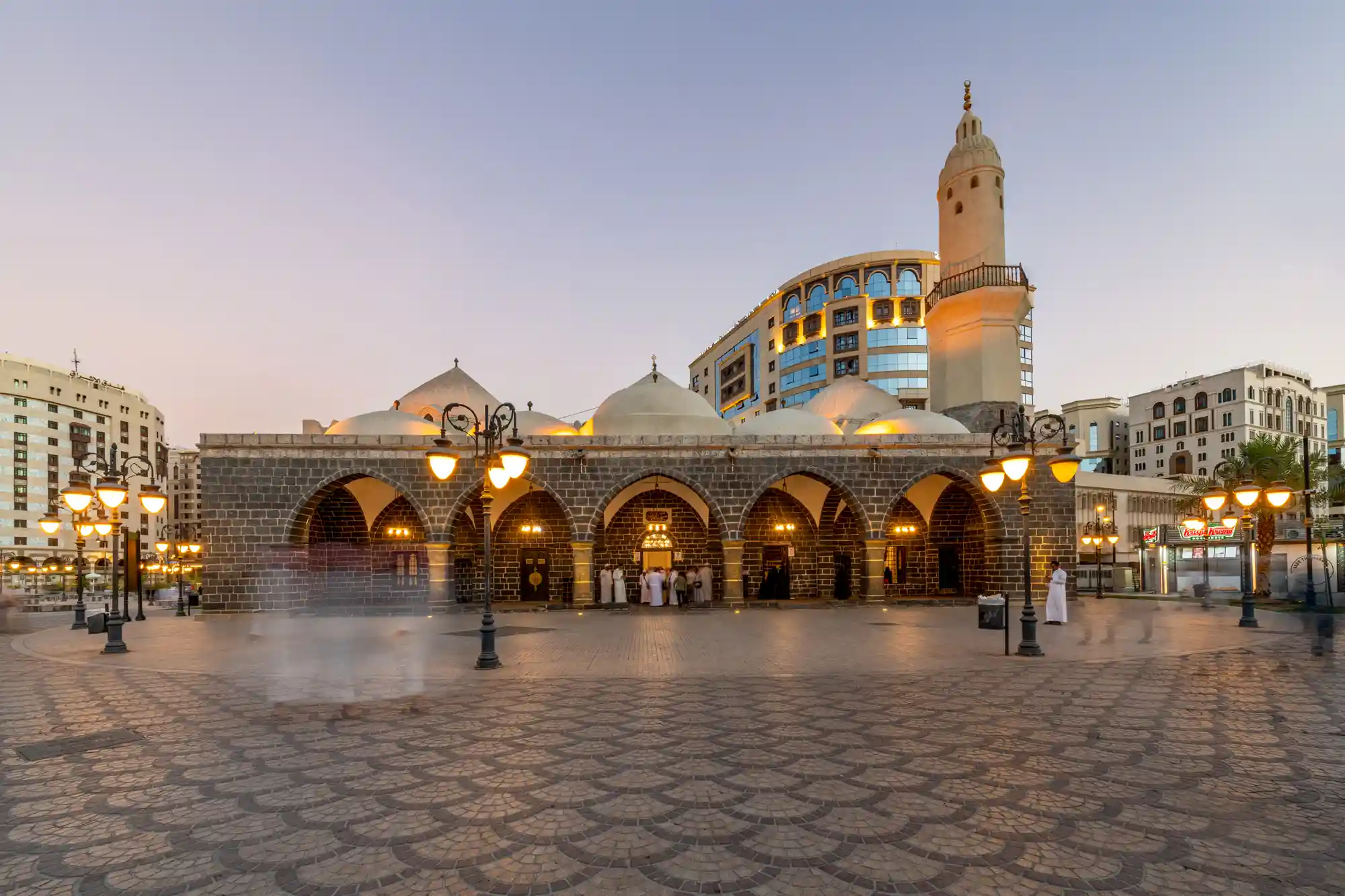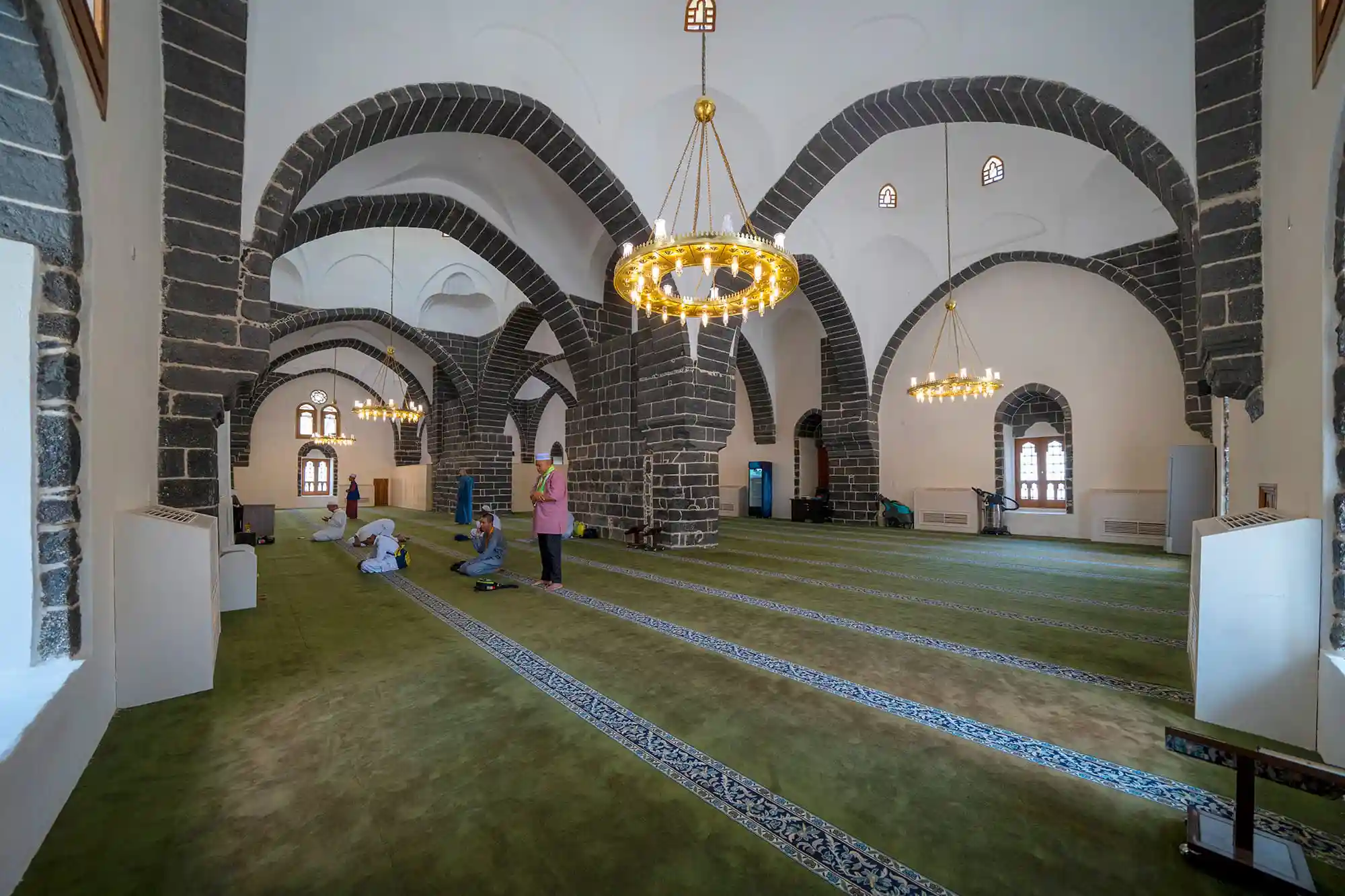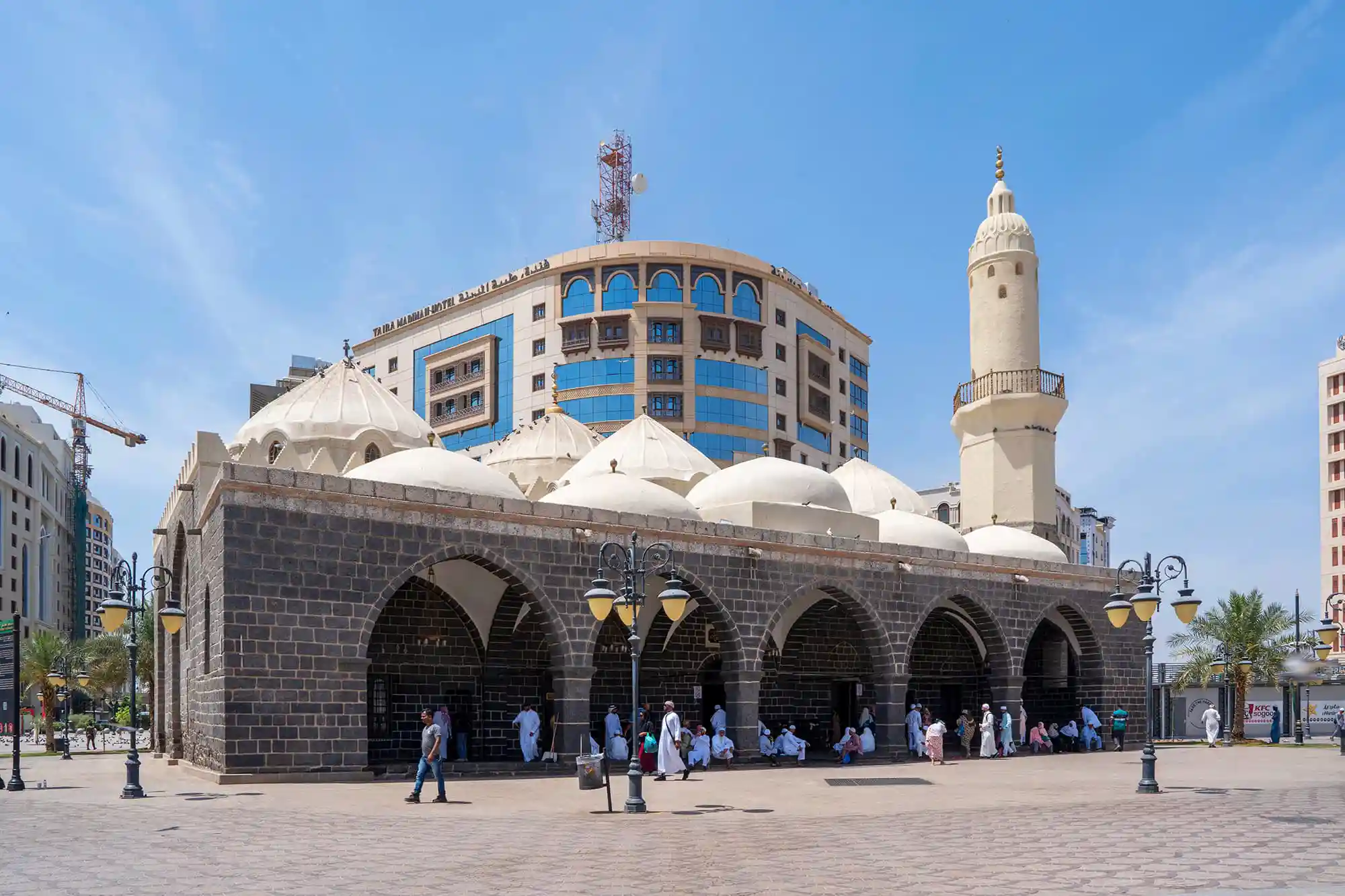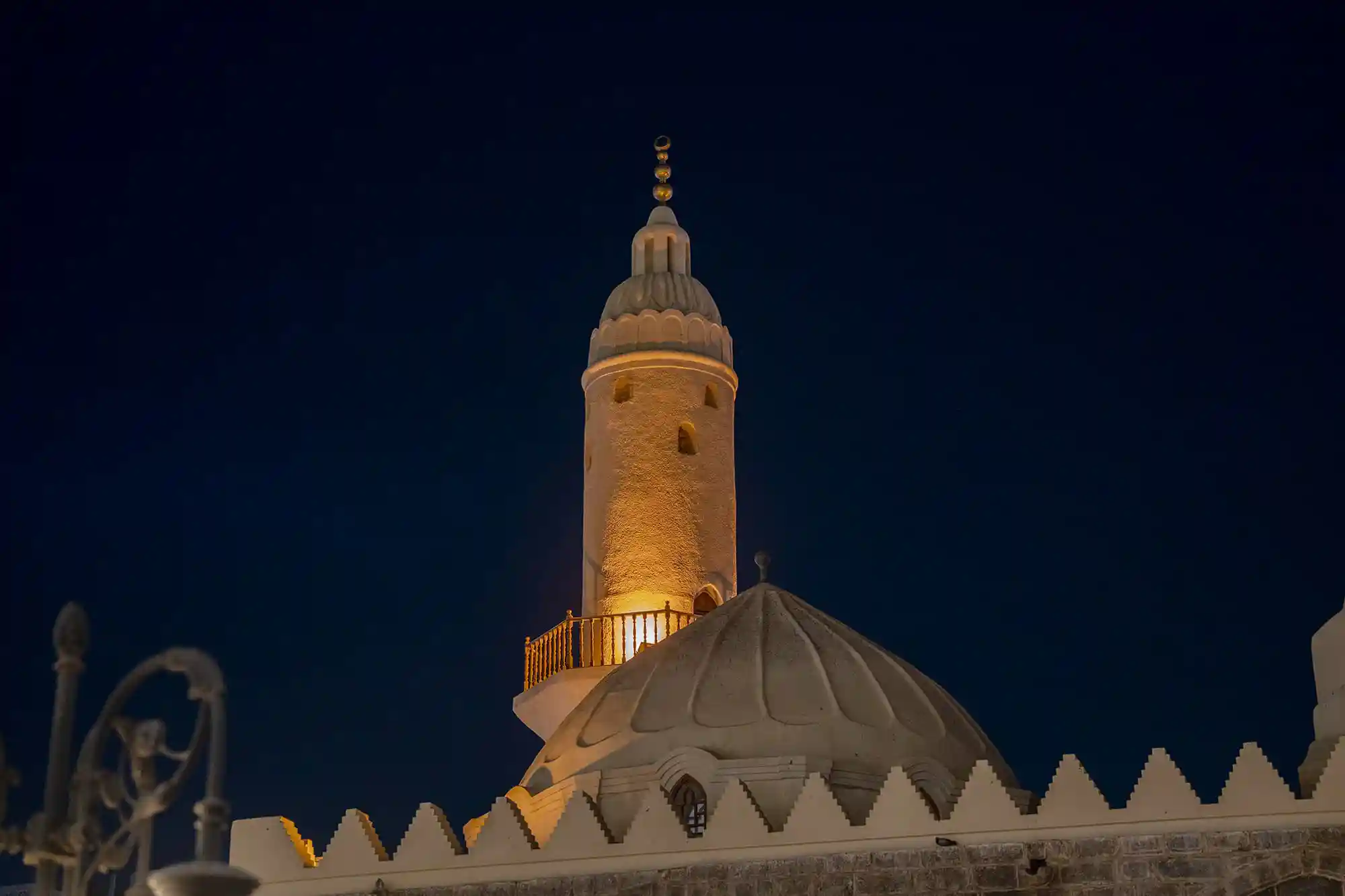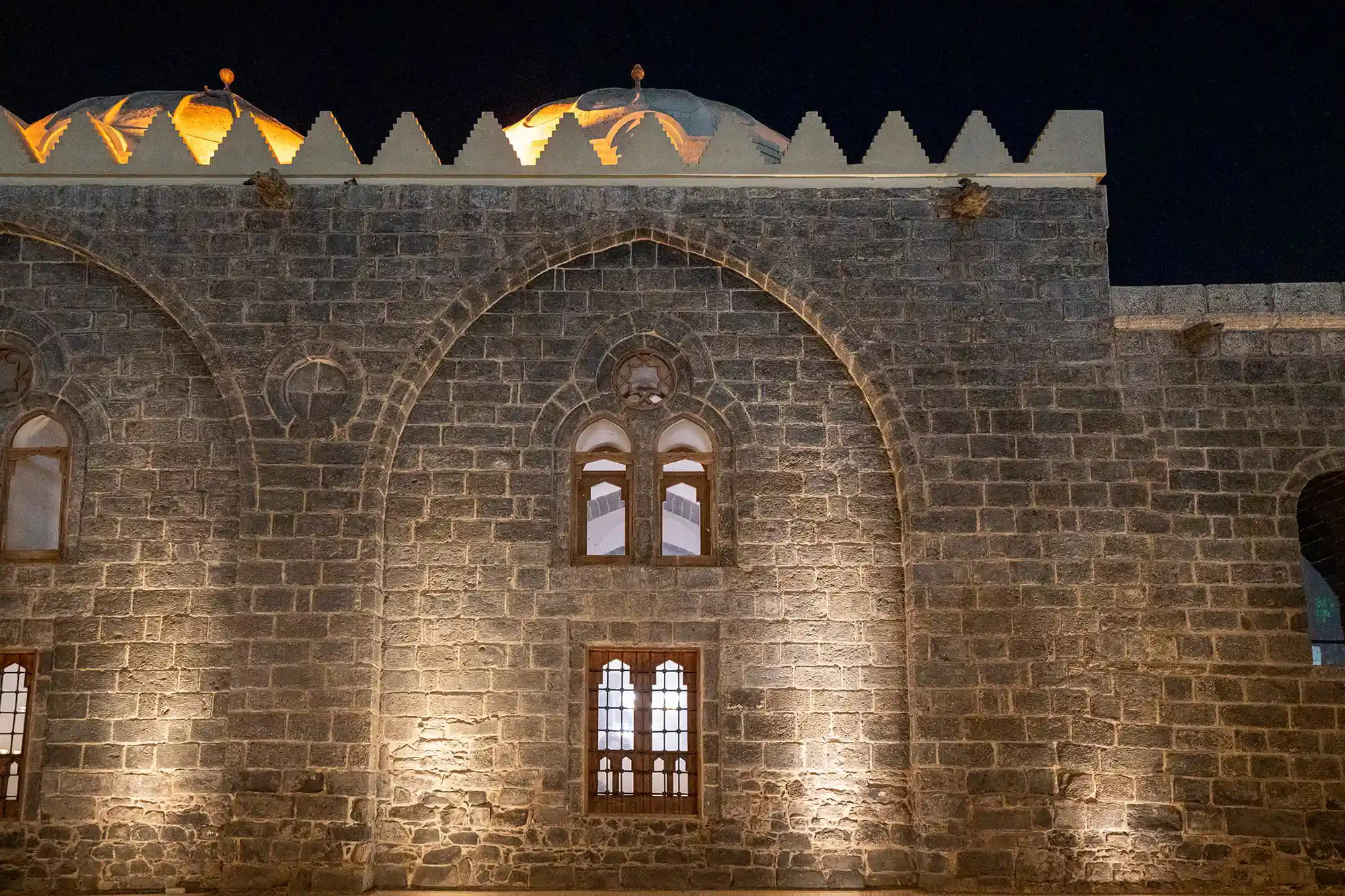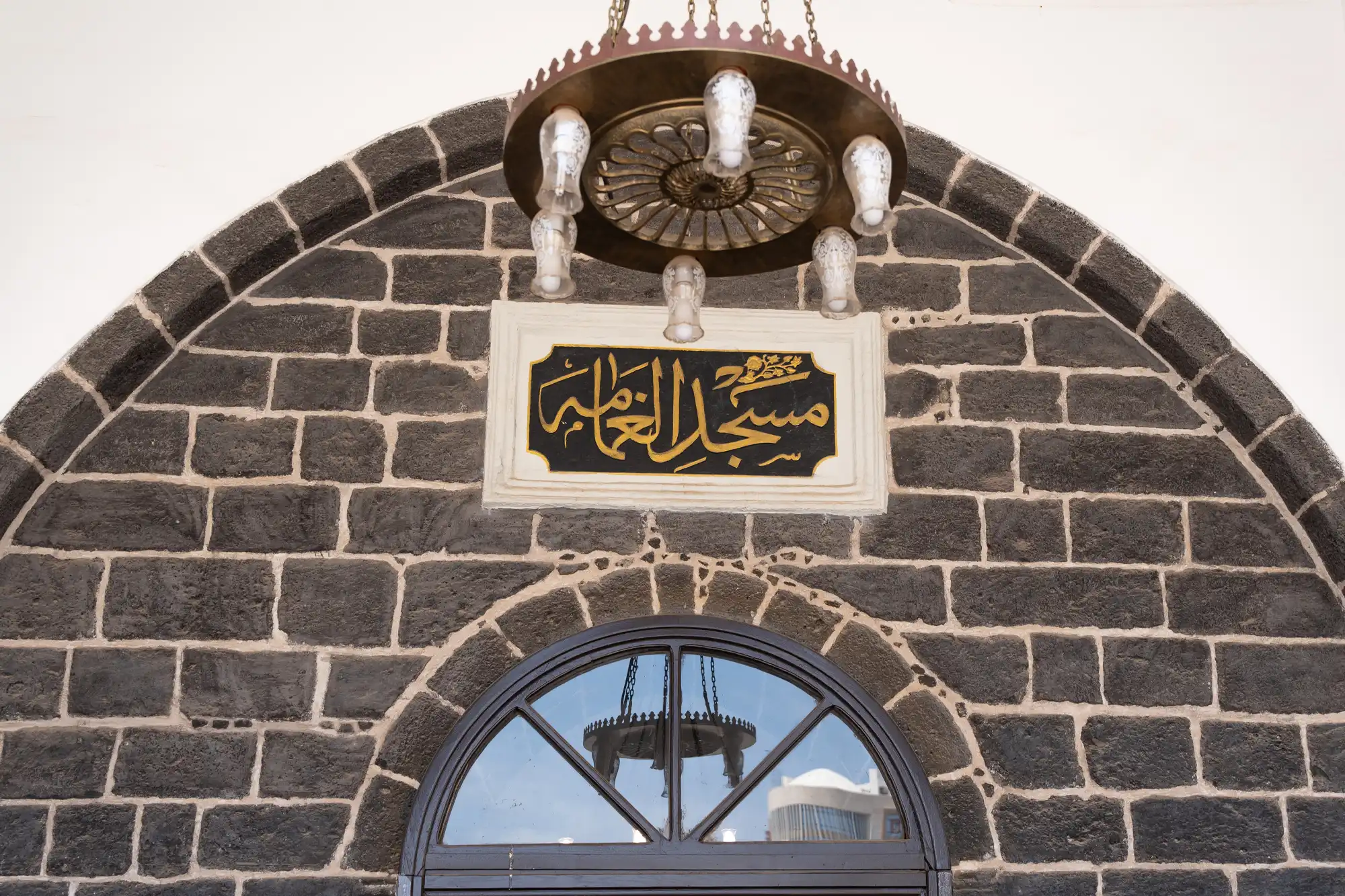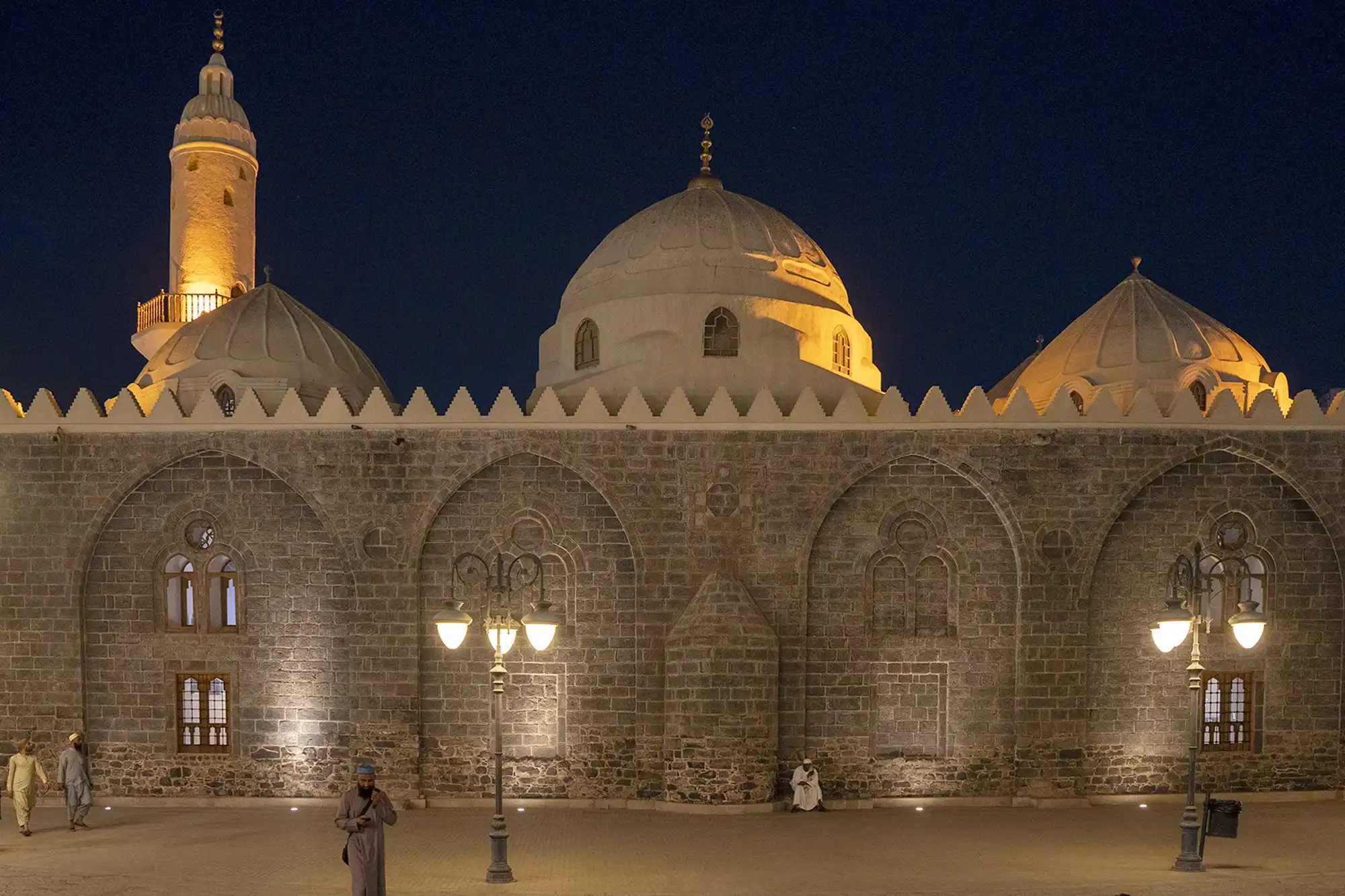Al-Musalla refers to the square located on the Prophet's Mosque's southwest side. The previous of Madinah Suq was also known as Al-Manakhah. In this square, the Prophet (PBUH) performed Eid Al-Fitr, Eid Al-Adha, and the prayer for rain (ṣalāt al-istisqa). In addition, the prophet (PBUH) also performed the Absentee funeral prayer for Najashi, King of Abyssinia.
Al-Musalla Mosque (Al-Ghamamah) is the last place where the Prophet (PBUH) performed Eid prayer before he passed away.
Al-Musalla Mosque was constructed in the Umayyad era when Omar bin Abdulaziz ruled Madinah (87-93 AH). Afterward, the Mosque underwent several renovations, including the renovation executed by Izz Ad-Din, Sheikh of the Holy Mosque of Makkah, during Sultan Hassan bin Mohammad bin Qalawun As-Salihi era (748-762 AH). Also, Prince Burdik renovated it in 861 AH. The current structure of the Mosque dates back to the 13th century AH. During the Saudi era, the Mosque received increased care and maintained its historical architectural style. It was also repaired and maintained during the reigns of King Saud bin Abdulaziz Al Saud in 1373 AH, King Fahd bin Abdulaziz in 1411 AH, and King Abdullah bin Abdulaziz in 1434 AH. The Mosque was also rehabilitated during the reign of King Salman bin Abdulaziz.
Eid and Rain-Invoking Prayer Ground:
The Messenger of Allah (ﷺ) used to offer Eid and rain-invoking prayers outside the Prophet’s Mosque in different places in the desert. Towards the end of his life, he settled on praying in this place, so he mostly offered Eid and rain-invoking prayers on the site of this mosque. There was neither a structure nor a pulpit at the time. The place was part of the uninhabited desert outside Madinah. Today, the mosque has become adjacent to the Prophet's Mosque courtyards, following the great Saudi expansion works.
Names of the Mosque:
It was known as Al-Musalla Mosque; i.e., the place of performing Eid and rain-invoking prayers. Recently, it has become known as Al-Ghamamah Mosque because the Prophet used to offer rain-invoking prayer there. It is reported that a cloud shaded the Messenger of Allah (ﷺ) from the sun in this place while he was invoking for rain.
Significance of the Mosque:
This site was one of the most important prayer grounds where the Messenger of Allah (ﷺ) prayed. It is also a site where Muslims used to gather for Eid and rain-invoking prayers.
One of the merits of this spot is that it is the place where the Messenger of Allah offered funeral prayer in absentia for the Negus, King of Abyssinia, who believed in the Messenger of Allah, welcomed and protected the Muslims who emigrated to his dominions. The Prophet informed the companions of the death of the Negus immediately after he died and ordered them to ask forgiveness for him. Moreover, he ordered them to gather at the prayer ground, where he lined them up in rows and then led them in the funeral prayer.
History:
The mosque was built by Omar ibn Abdulaziz, may Allah have mercy on him, when he was governor of Medina in the first century AH. In the presence of the major successors of the companions, Omar ibn Abdulaziz traced the Prophet's prayer grounds and built mosques on those sites to delineate their locations.
The building was renewed and repaired several times, the largest of which was the comprehensive improvement of the structure by the Saudi government. The mosque was restored according to the highest standards to ensure preserving its unique architectural design.
What Does the Mosque Look Like Today?
The mosque consists of an entrance, 4m wide and 26m long. It is topped by 5 domes.
The prayer hall is 15m wide and 30m long. A cylindrical minaret is erected in one of the corners.
Above the door is a green signboard, with the phrase "Al-Ghamamah Mosque" inscribed in golden
thuluthscript.
The exterior structure of the mosque consists of black basalt stones, characteristic of the lava plains around Madinah. The interior walls and the exterior and interior dome walls are painted with white lime. The original black color of the stones was preserved in the abutments and arches, giving a majestic view of the contrast of the twocolors derived from the natural surrounding areas.
Visiting Al-Ghamamah Mosque:
Today, congregational obligatory prayers are offered in Al-Ghamamah Mosque. It is a historical landmark that attracts visitors to Madinah. The mosque is open from 10:00 am to 12:00 midnight.
